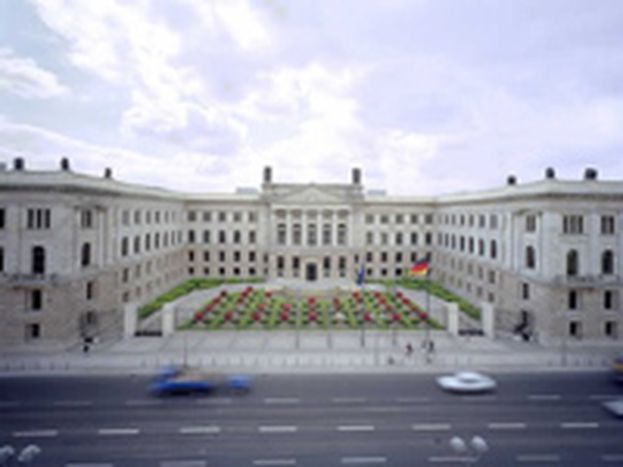
German federalism reforms
Published on
Translation by:
 akasemi newsome
akasemi newsome
It is said that no system of government is as complex as German federalism. But after decades of debate, the country is on the verge of reforming its division of power between the federation and state.
“As federal as possible, as centralised as necessary,” were the words of the first post-war Social Democrat (SPD) party chair, Kurt Schumacher, as the allies cobbled together a new German state.
As in every other representative democracy, state power in Germany is channelled horizontally into the executive, legislative and judicial branches of government. But, it is also distributed vertically between the nation or federation and its regions, the states, where the horizontal division of power is reproduced.
States are also assigned specific areas of expertise. Education and culture, for example, are solely the realm of the state governments. On the other hand, the federal government bears full responsibility for tax policy and foreign affairs. A unique feature of German-style federalism is the upper house of the national parliament, the Bundesrat. According to Article 50 of the German constitution, the states have a right to be represented in the national government and must have a say in federal legislation and be able to influence affairs at the European level.
The purpose of the Bundesrat is to provide a forum and vehicle for the practical experience of states in governance. This provision has led to the messy entanglement of duties and responsibilities among the federal, state and local governments such that actual law-making has taken a back seat to protocol. For years, national media have complained that gridlock reigns in Germany and that as soon as a party has the majority in the upper house, it wields power for the good of the party not the individual states.
Germans have long discussed reforming their federalist structures of government. In a 2003 interview with the German parliamentary newspaper, Das Parlament, former Bundesrat President Dieter Althaus urged that the number of laws requiring approval by the upper house be reduced and that additional competencies be shifted to the states. Althaus argued that federalism’s greatest strength lies in its accountability and accessibility to ordinary citizens. For these reasons, he continues to push for greater transparency: “Voters have to be able to figure out who does what.”
Reform
A political movement to reform German federalism fell through before its scheduled implementation in 2004. But, with the rise of the Grand Coalition, last year’s elections may mean that reform could yet find a way. The coalition between the SPD and the Christian Democrats (CDU) possesses an overwhelming majority in the Bundesrat.
Chancellor Merkel affirmed “we are on course for reform” after a recent meeting with state executives on December 15. The grand coalition has said it hopes specifically to reorganise fiscal duties between the states and the federal government. The issue of fiscal reform was so controversial that both parties agreed to leave it off the table in coalition talks. Reform could also involve questions such as which organs are responsible for national security, education or the financing of labour market reforms under Hartz IV.
But the big question is whether German federalism should be competitive, with each state largely self-sufficient, or whether the richer states should bear the burden for poorer states in the north and east. The influence of EU support for deprived areas could be a strong argument in favour of the former.
Switzerland as Role Model
There are 23 constitutionally federalist countries in the world. Some are a composition of different states, such as Brazil or the United States. Others, such as Canada or Pakistan, are made up of provinces. The existence of a common language in Germany certainly helps foster cohesion. But the existence of linguistic diversity as in India (with 21 official languages) or in Switzerland (with four: German, French, Italian and Romansch) does not pose an obstacle to building a national community. Germany and the EU have much to gain from using Switzerland as a model: after the people, the Cantons or counties have the right to approve legislation. All duties not explicitly assigned to the federal government remain the domain of the Cantons.
Translated from Deutschland: Raus aus dem Reformstau


